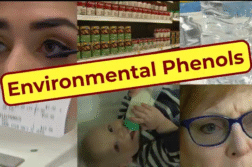BOSTON, Mass. (Ivanhoe Newswire) — Can you hear me now? Well, 26 million men and women have trouble hearing. The impact of hearing loss can be profound. It can lead to the loss of communication, social isolation, and even increase the risk of dementia. But did you know that teens, even toddlers can experience noise-induced hearing loss? In fact, more than five million children between the ages of six and 19 are impacted by it. And for them, it can lead to depression, isolation and even delayed language development. So, what can you do to protect your childs hearing?
Does your child have selective hearing, or could they possibly have the beginning of hearing loss?
Normal every day activities can cause noise-induced hearing loss in children.
“Shooting firearms without hearing protection, playing in rock bands, listening to your headphones too loud for too long, that actually does put some people at risk for losing access to sounds that they need to be able to hear for language development,” explained Pediatric Audiologist Brian Fligor from Tobias & Battite Hearing Wellness.
He says noise over 75 decibels can start to damage a child’s hearing. Normal conversation is 60 decibels. But some constant noise from thinks like hair dryers, motorcycles, music, sirens and fireworks can do irreversible damage. There could be a problem if you notice your child has trouble hearing soft of faint sounds, if they complain conversations are muffled, if they ask you to repeat things, and Fligor stated, “So one of the first things that a child is going to report if there are some concerns about hearing loss, is they’re gonna have a ringing, buzzing, hissing noise in their ears.”
So it’s up to parents to protect their children. Most importantly, if you think there’s a problem get your child’s hearing checked with their doctor.
One common myth Fligor says is that parents think if they can hear the music coming out of their child’s headphones that it’s too loud. When in fact, you don’t have to hear it for it to already be damaging your children’s hearing. And remember, not all hearing loss is permanent. It can also be caused by excess wax in the ears, an infection or head trauma.
Contributors to this news report include: Marsha Lewis, Producer; Matt Goldschmidt, Videographer; Roque Correa, Editor.
To receive a free weekly e-mail on medical breakthroughs from Ivanhoe, sign up at: http://www.ivanhoe.com/ftk
Source:
https://my.clevelandclinic.org/health/diseases/21776-noise-induced-hearing-loss-nihl
https://health.clevelandclinic.org/what-is-causing-your-childs-hearing-loss-10-possibilities
FOR MORE INFORMATION, PLEASE CONTACT:
Amber Debrosse
Executive Assistant at Tobias & Battite Hearing Wellness
If this story or any other Ivanhoe story has impacted your life or prompted you or someone you know to seek or change treatments, please let us know by contacting Marjorie Bekaert Thomas at mthomas@ivanhoe.com



